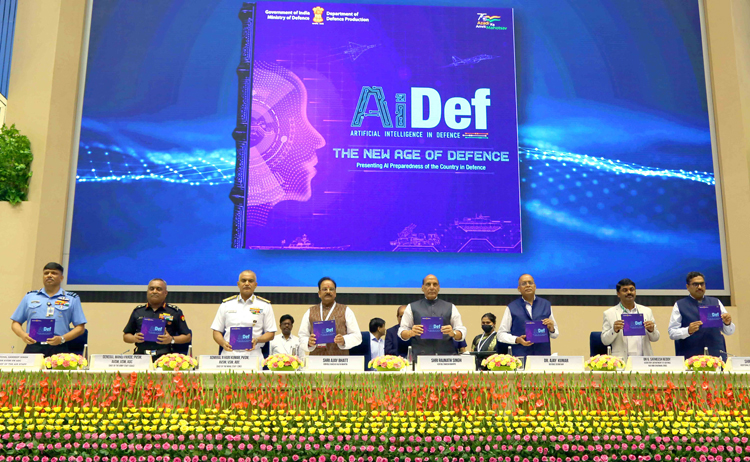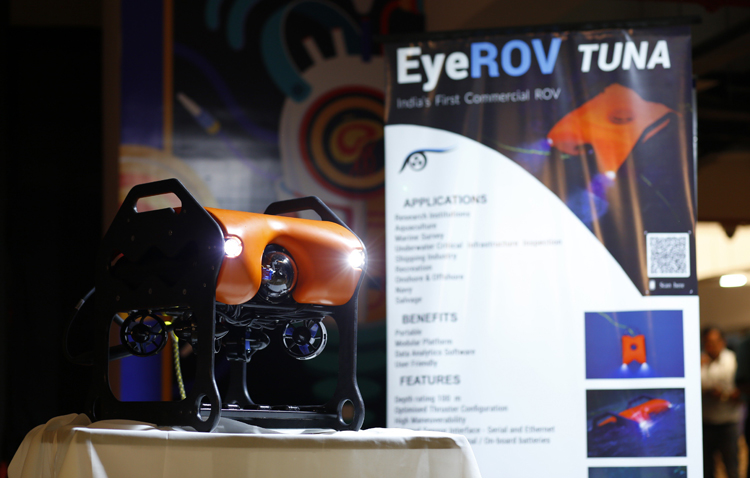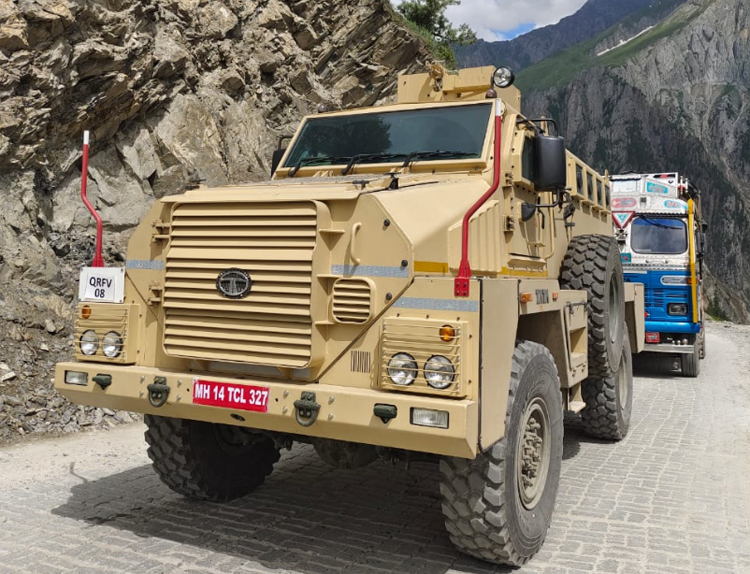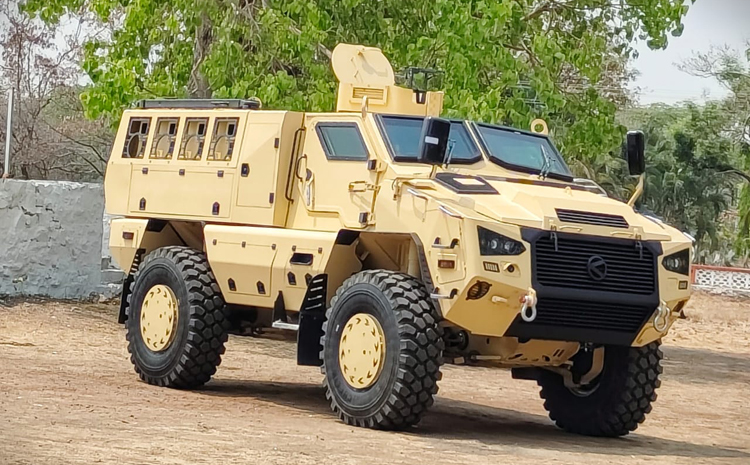INDIAN ARMED FORCES CHIEFS ON OUR RELENTLESS AND FOCUSED PUBLISHING EFFORTS

The insightful articles, inspiring narrations and analytical perspectives presented by the Editorial Team, establish an alluring connect with the reader. My compliments and best wishes to SP Guide Publications.

"Over the past 60 years, the growth of SP Guide Publications has mirrored the rising stature of Indian Navy. Its well-researched and informative magazines on Defence and Aerospace sector have served to shape an educated opinion of our military personnel, policy makers and the public alike. I wish SP's Publication team continued success, fair winds and following seas in all future endeavour!"

Since, its inception in 1964, SP Guide Publications has consistently demonstrated commitment to high-quality journalism in the aerospace and defence sectors, earning a well-deserved reputation as Asia's largest media house in this domain. I wish SP Guide Publications continued success in its pursuit of excellence.
- MoD initiates comprehensive review of Defence Acquisition Procedure 2020, pushes for defence reforms
- G7: The Swansong
- Kalinga Connect: South Asia to Polynesia
- Advanced MRSAM for India for a greater firepower
- Must Credit DRDO for Operation Sindoor, now what is next for defence R&D?
- Operation Sindoor | Day 2 DGMOs Briefing
- Operation Sindoor: Resolute yet Restrained
AI Enabled ATV and QRFV
Collaborative work done in the field of AI is being done by the three Services, the Defence Research and Development Organisation (DRDO), Defence Public Sector Undertakings (DPSUs), iDEX start-ups and the private sector
 |
The Author is Former Director General of Information Systems and A Special Forces Veteran, Indian Army |

China has inducted robots in Ladakh, including ones that are equipped with machine guns. Now, there is news that the Indian Army is conducting trials of AI-enabled, unmanned all terrain vehicles (ATVs) for surveillance and logistics operations.
On July 11, 2022, Defence Minister Rajnath Singh presided over the first ever ‘Artificial Intelligence in Defence’ symposium and exhibition organised by the Ministry of Defence (MoD) at New Delhi. During this event, the Defence Minister introduced 75 newly developed artificial intelligence (AI) products and technology spanning autonomous weapon systems, autonomous-unmanned-robotic systems, cyber security, human behaviour analysis and the like. Defence Minister Rajnath Singh released physical and electronic versions of the book containing information on these 75 products, showcasing the collaborative work done in the field of AI by the three Services, the Defence Research and Development Organisation (DRDO), Defence Public Sector Undertakings (DPSUs), iDEX start-ups and the private sector.
Trishul, an AI-enabled and remotely-operated weapon station can detect human movement, direct weapons and fire automatically, engage targets at 300 metres with 100 per cent probability of first round hits
One of the products on display of the above 75 products was an ATV developed by the Kalyani Group which runs on both batteries and motors. Both wheeled variants (4×4 and 6×6) of this ATV are fully indigenous. The vehicle has multiple sensors for mapping, path planning and obstacle detection, and can operate in temperatures ranging from minus 20 degree to plus 50 degrees centigrade. This ATV was also part of the Indo-Japanese military exercise ‘Guardian 2022’ held at the foreign training node in Belgaum during February this year. A tracked version of this ATV is being developed in conjunction with a European company.


This Kalyani Group ATV has an operational range of three km and is mounted with day and night cameras having a range of two km; overall giving the command centre, surveillance up to five kms. with load carrying capacity of 500 kg, it can operate on battery for about six hours and on motor for 14 hours. As part of the AI-enabled ATV trials, this ATV has also been tried by the Army; the infantry using it to carry logistics like weapons and ammunition, while armored units tried it out for surveillance missions. However, it can also be deployed for explosive detection and neutralisation of improvised explosive devices (IEDs).
The Army is slated to conduct trials of AI-enabled ATVs in Ladakh during August this year. This will be followed by trials in the deserts of Rajasthan. Other AI-enabled ATVs under consideration include an ATV built by Torus Robotics developed in conjunction with BEML Limited (formerly Bharat Earth Movers Limited), which has a payload capacity of 750 kgs. Trishul, an AI-enabled and remotely-operated weapon station that can detect human movement, direct weapons and fire automatically, engage targets at 300 metres with 100 per cent probability of first round hits, is also under consideration. Once all trials are completed, the Army will initiate action for bulk procurement.
India has around 194 defence technology startups who are building innovative technological solutions to empower and support the country’s defence efforts
India has around 194 defence technology startups who are building innovative technological solutions to empower and support the country’s defence efforts. Mumbai-based ideaForge is involved in the manufacturing of drones for defence, homeland security, and industrial applications. While startups like Torus Robotics are working to provide a security solution on the ground, Kochi-based EyeROV is building a remotely operated vehicle (ROV) for underwater inspection.

The good news is that Tata Advanced Systems Limited (TASL) successfully delivered the indigenously developed Quick Reaction Fighting Vehicle-Medium (QRFV) to the Indian Army on July 25, 2022. These are troop carrying trucks which are mine proof. The exact number of QRFV delivered to the Indian Army is not known but TASL released a video clip showing a column of 10 x QRFVs. TASL tweeted, “TASL has successfully delivered the QRFV to the Indian Army. The induction of this vehicle developed by TASL would greatly enhance the operational capabilities of the Indian Army in future conflicts.”
Indigenously developed Quick Reaction Fighting Vehicle-Medium (QRFV) was successfully delivered to the Indian Army and will greatly enhance the operational capabilities of the Indian Army in future conflicts

Concurrently on July 25, Ajay Bhatt, MoS (Defence), stated that the government has taken several policy initiatives in the past few years and brought in reforms to encourage indigenous design, development and manufacture of defence equipment in the country, thereby expanding the production of indigenous defence equipment. In a written reply to Rajya Sabha, Bhatt said that the initiatives taken by the Centre to encourage the production of indigenous defence equipment have resulted in cutting the expenditure on defence procurement from foreign sources from 46 per cent of the overall expenditure to 36 per cent in the last four years; 2018-19 to 2021-22.

According to a defence release, in April 2022, General M.M. Naravane, then Chief of Army Staff, had inducted the first set of QRFV, Infantry Protected Mobility Vehicle (IPMV), Ultra Long Range Observation System developed by TASL and Monocoque Hull Multi-Role Mine-Protected Armoured Vehicle developed by Bharat Forge.





